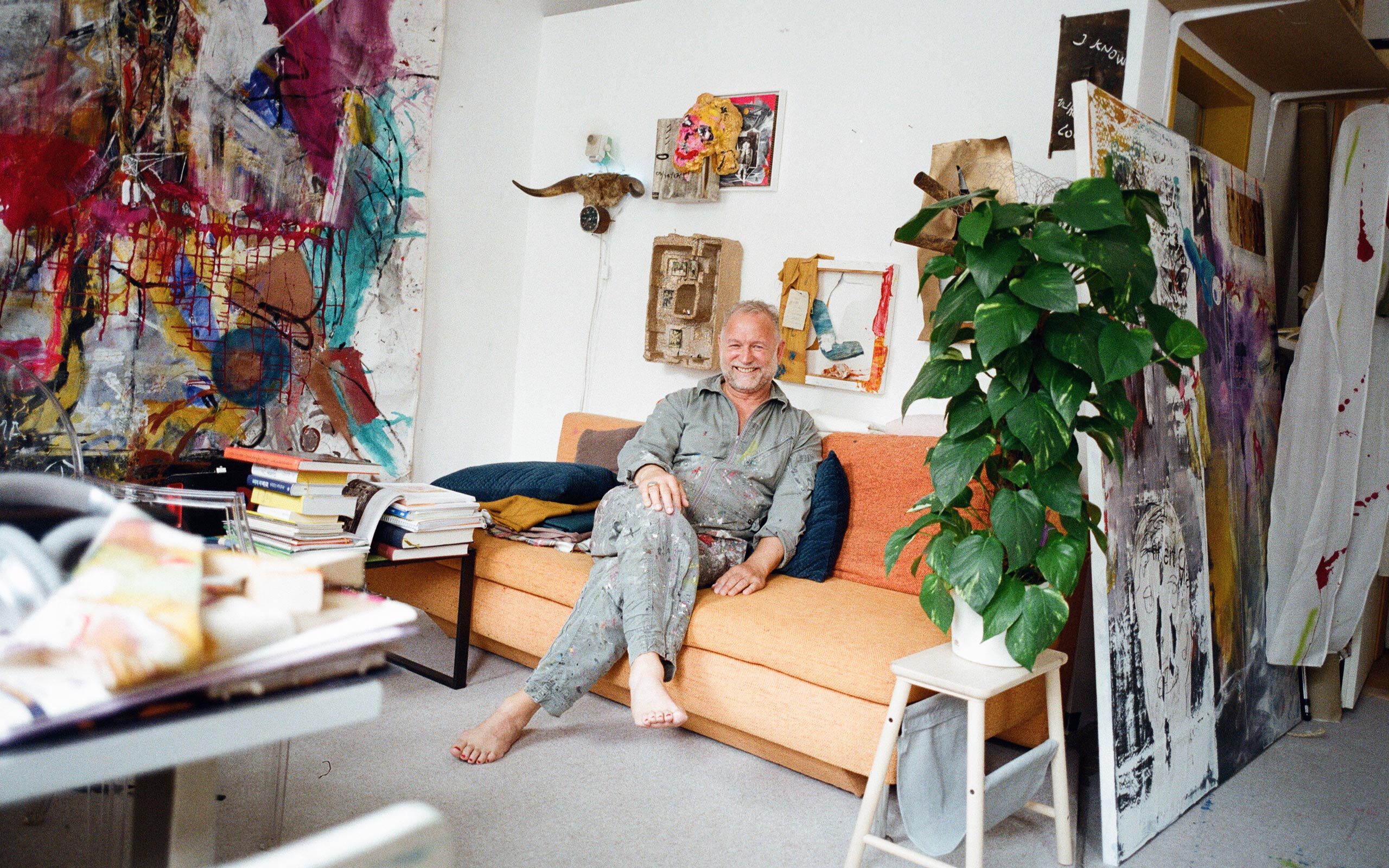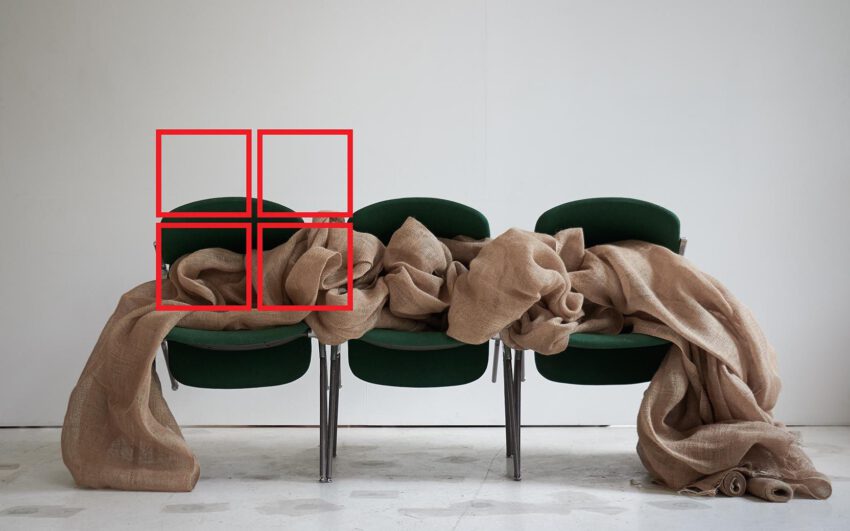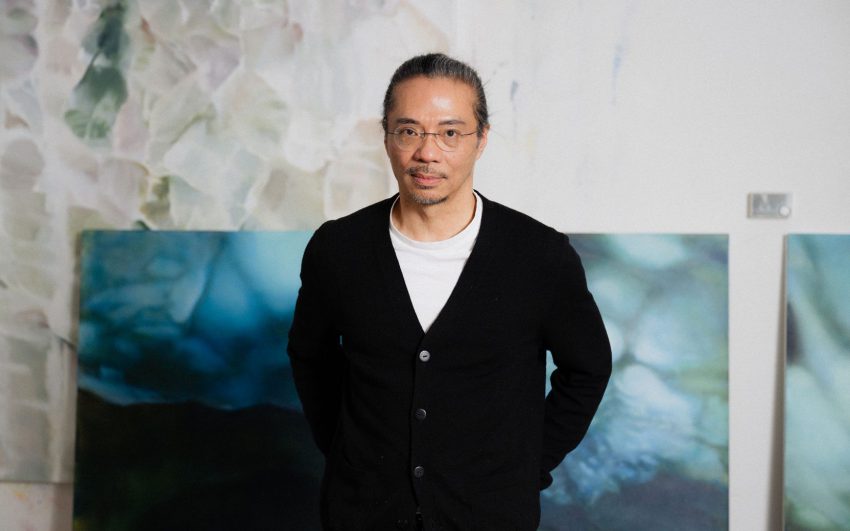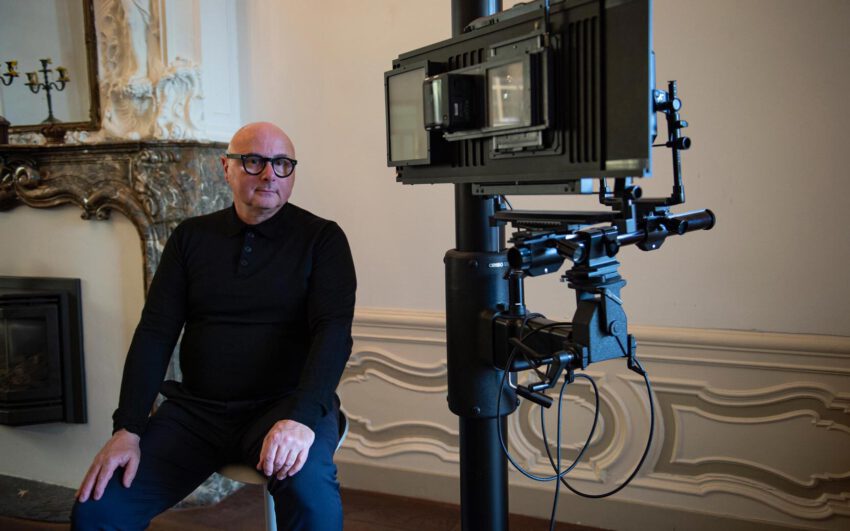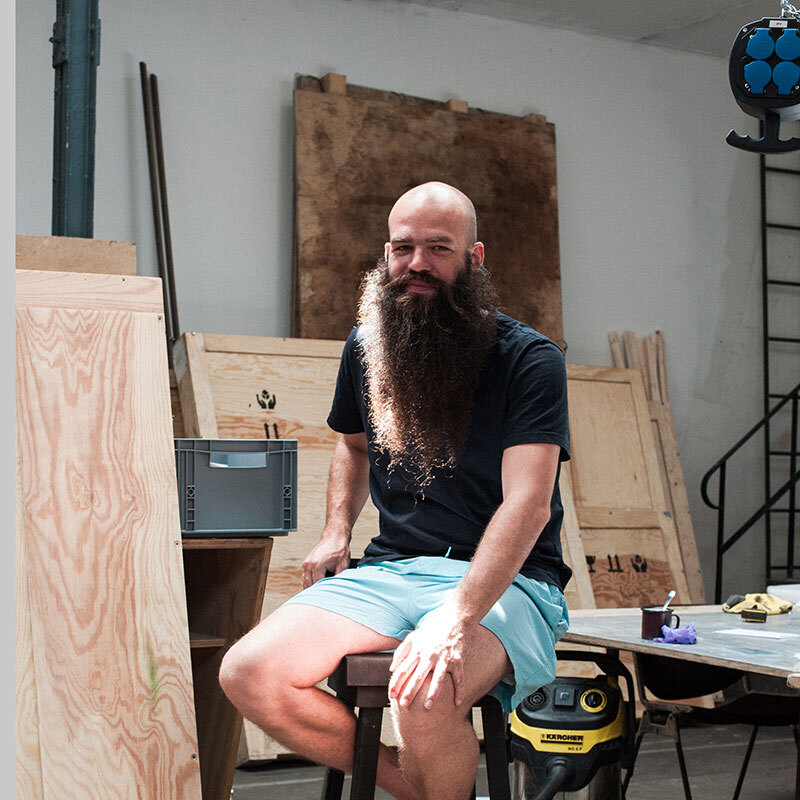For the artist Reinhold Ponesch, born in Bregenz, art is the means to transform thoughts. For him, it is an emotional investigation of society, people, and his artistic self by means of a range of media and approaches ranging from painting, object installations, performances, to storytelling workshops with children. His color-intensive works, as well as his artistic approach, invite us to encounter and alternative perspectives, but also to keep such frames of reference open.
Reinhold, your path to art is quite unusual, because you were in the Cobra counter-terrorism tactical unit when you began to paint and then subsequently devoted yourself completely to art; had it always been your plan to become an artist?
Not really, but this creative vein I must have somehow always had in me; it was only a little hidden or covered. The decisive event was an exhibition of work by an acquaintance of my brother in 2000. She exhibited abstract paintings in an old power plant in Vorarlberg. That was the initial spark where I said: Wow, I want to do that too! It took another year before I went shopping at the Boesner art supply store in Vienna, despite having no idea what I needed. When I came to check out the saleswoman said: That comes to 9,800 shillings (700 euros). And I thought to myself, why is it so expensive (laughs), and I had to decide whether or not to complete the purchase, and I said to myself: No, I’m going to buy these materials now and I’m going to make a start. At home I began painting on the canvas on the kitchen table, and I realized very quickly that it is harder than I anticipated because I knew nothing about painting techniques. I began to take numerous courses, including at the academy, and so over the years I have developed my personal technique.
So, it was never a kind of escape from a rather harsh or challenging work reality?
For me it has no correlation, even if some may think that being in a difficult occupation, art can be seen as a compensatory pursuit, for me it never was. I simply felt that I wanted to do something creative. And because art has become increasingly more to me, my other profession has become increasingly distant, also emotionally, and that was another very difficult path.
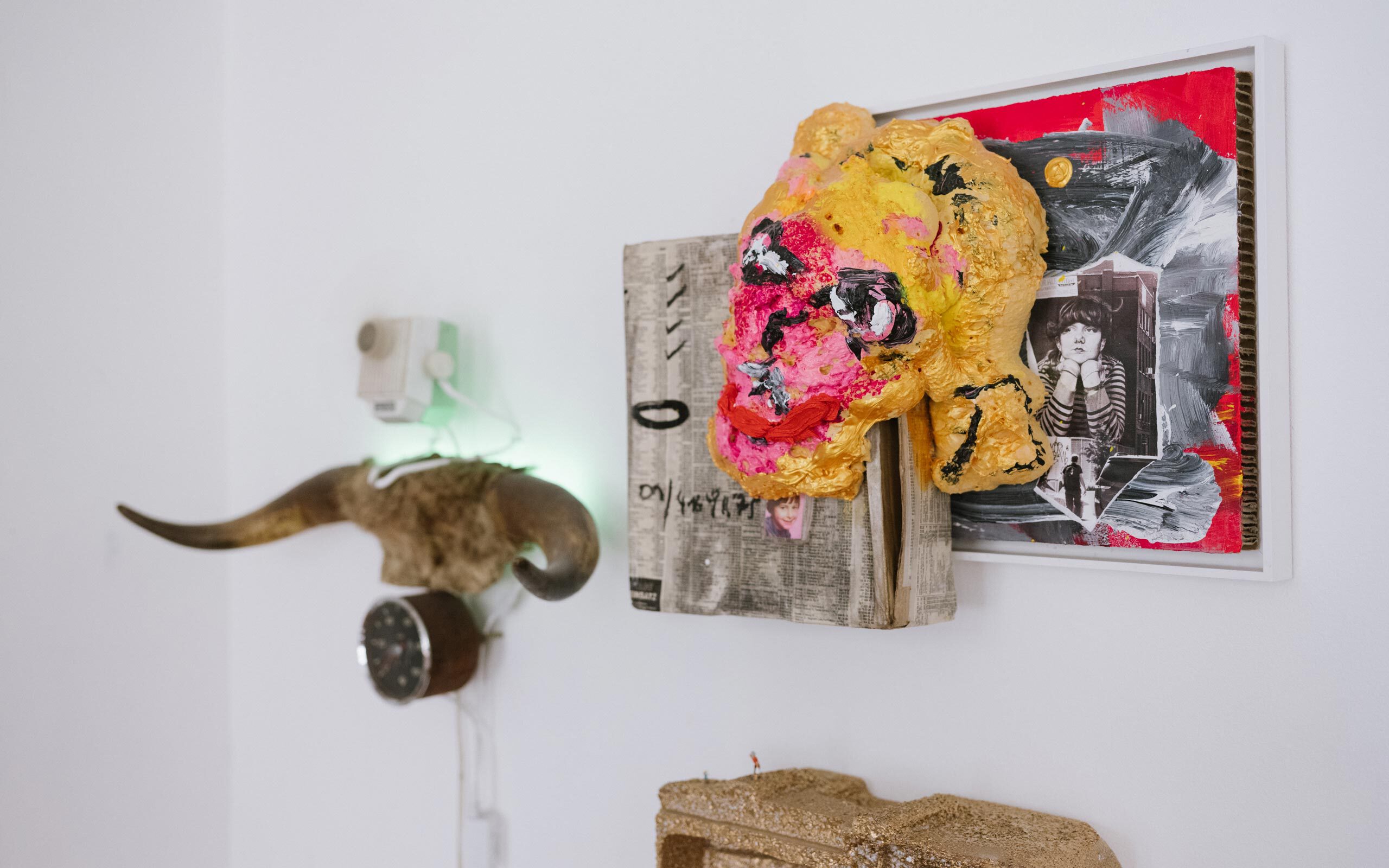
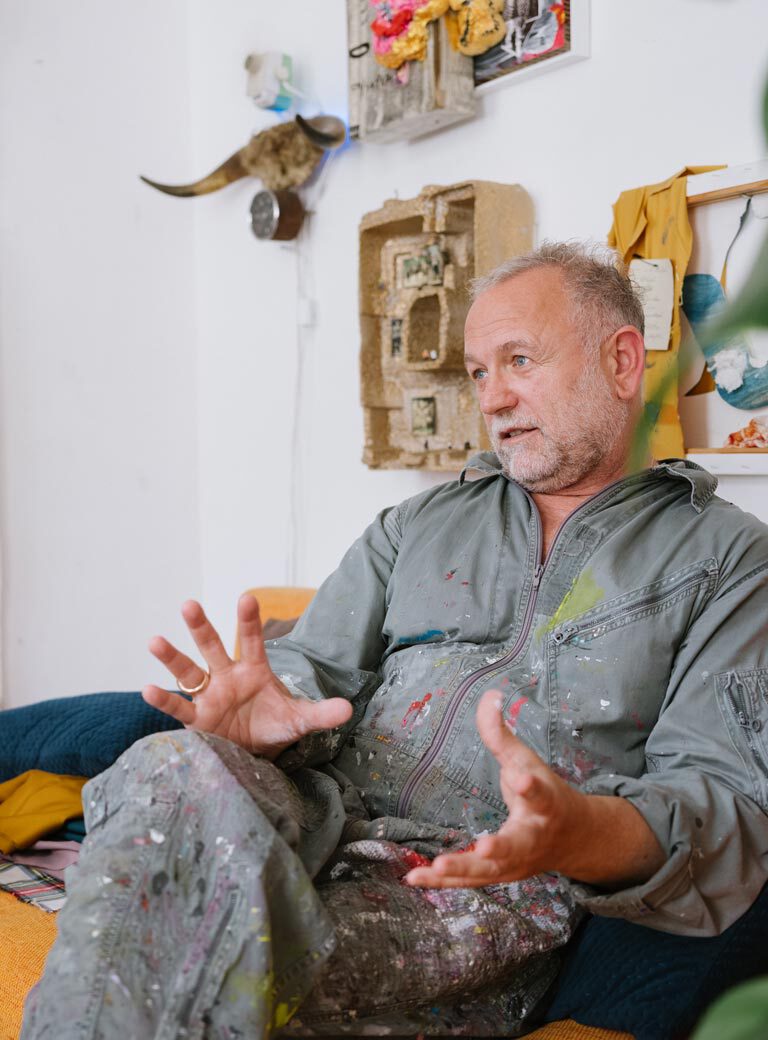
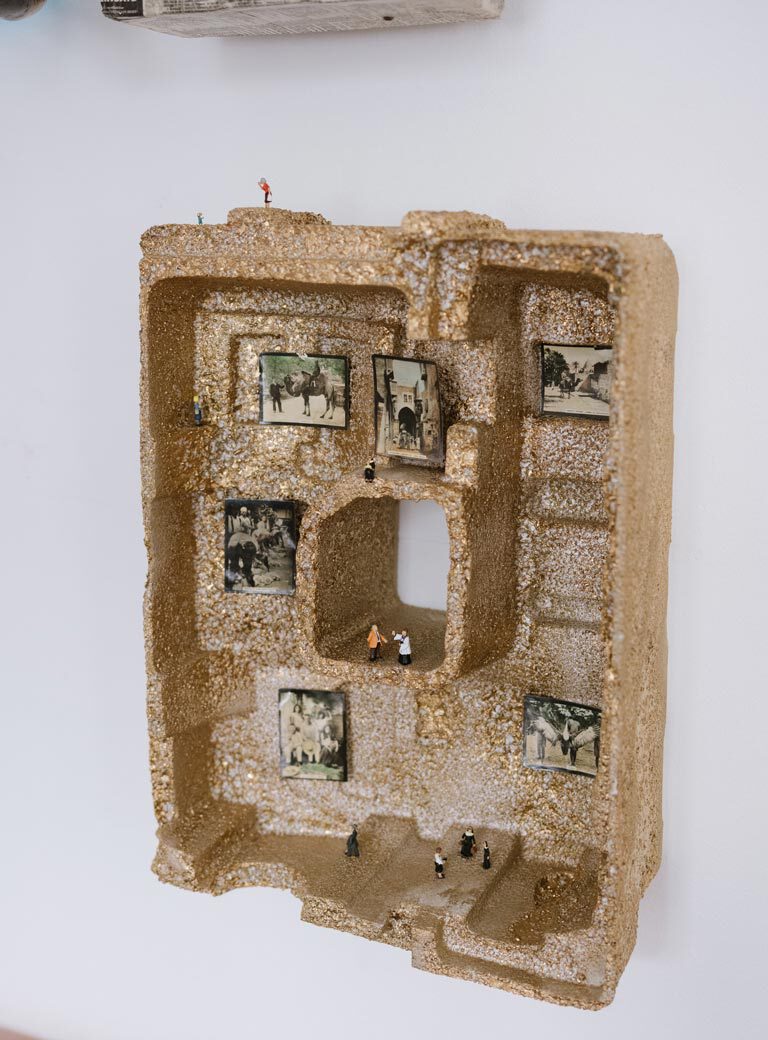
When did it start then? When did you realize, I’m an artist now?
In 2009 I decided that from then on, I wanted to create art professionally. I spent increasingly more time in the studio and reduced the work hours with in the police force, because I realized that I could not practice or combine both professions simultaneously, and I left the police completely in 2015. Since then, I have made my living producing art. In 2013, I won the Kapsch Art Award (art calendar) that opened the doors to collaboration with galleries and art fairs. The decision to work on art professionally had concluded, and then things began to happen, which was quite exciting.
Looking back, who encouraged your creativity?
Subconsciously, it was my father. My father never imposed restrictions on what I did. I have always been stubborn and did what I wanted. Since my father was also a painter, he encouraged me to take this step. And I think it is extremely important to have that encouragement and to take that first step and to see if it works, if one can create something this way... But apart from that, there were mentors and other artists that I had got to know with whom I had many conversations, including the Austrian artist Helmut Margreiter, who inspired me a lot. Also, my first teacher, who let me work very freely, but at the same time introduced me to many techniques. It is absolutely important to have techniques, without them painting does not work.
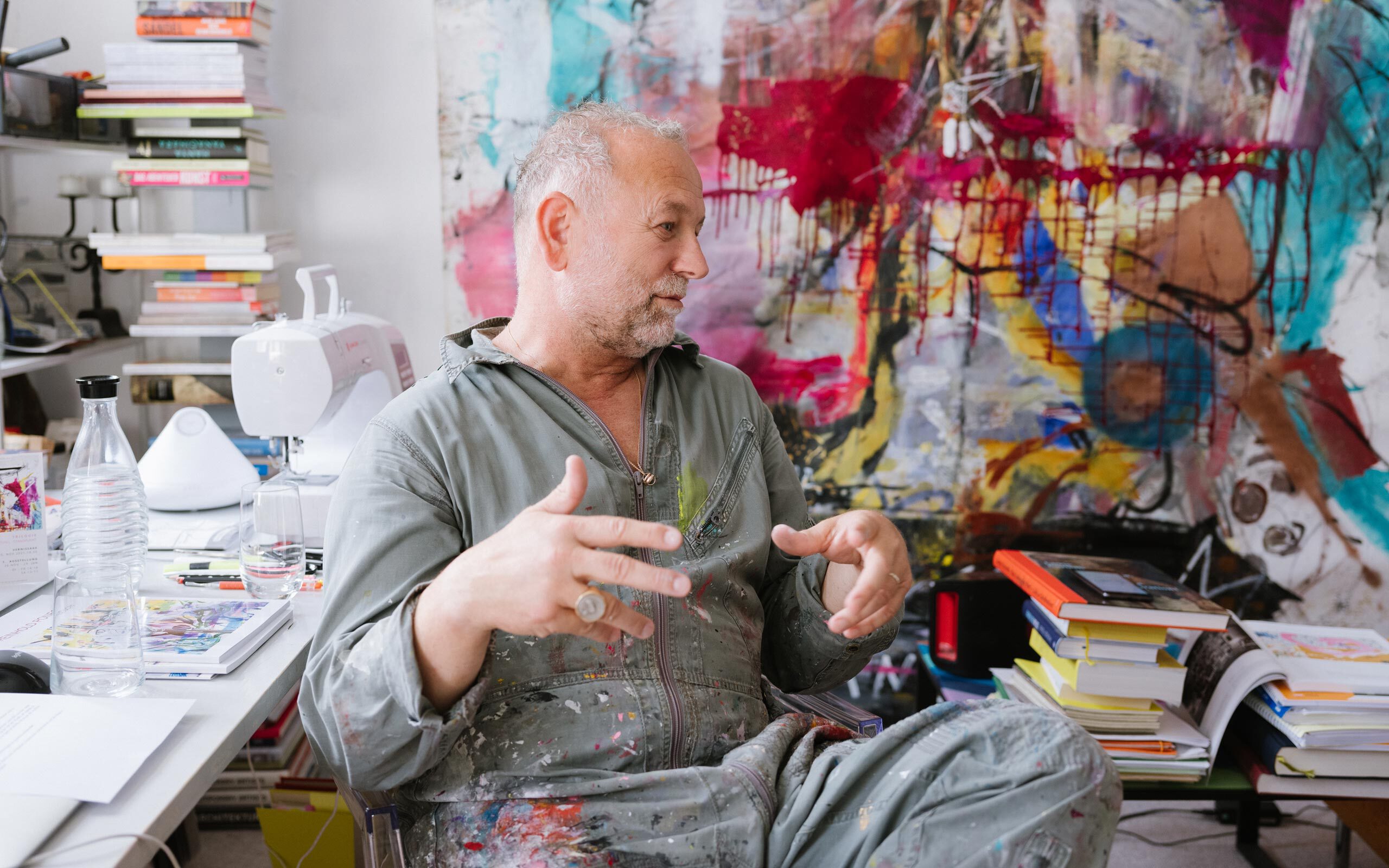
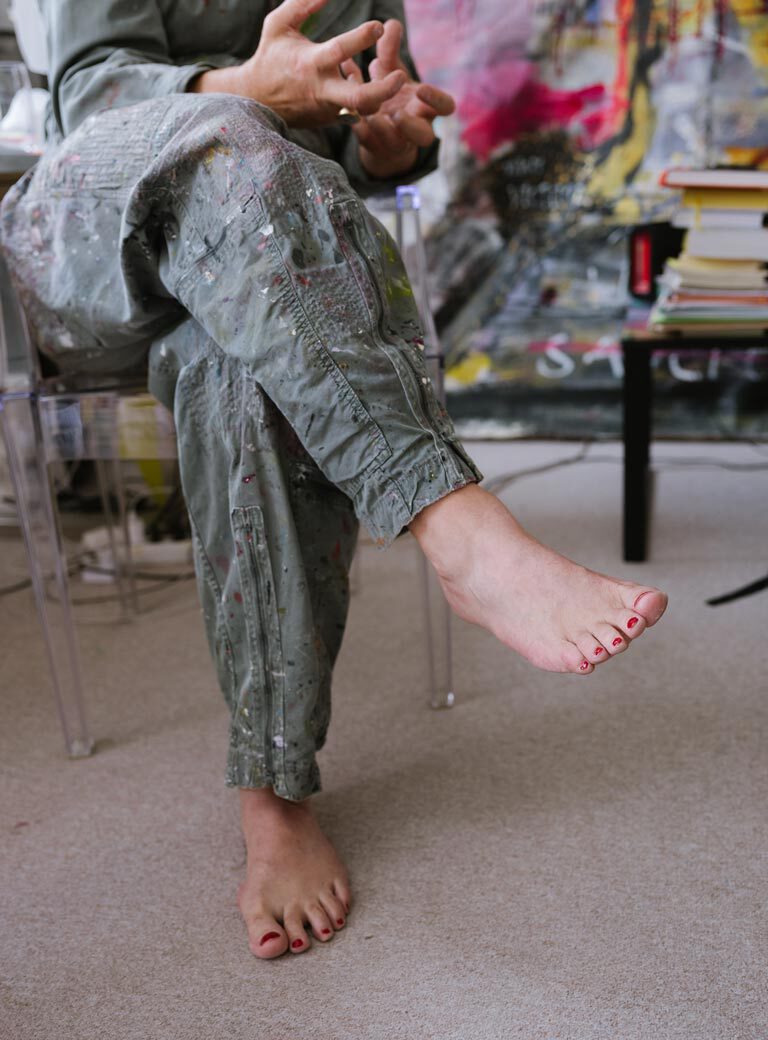
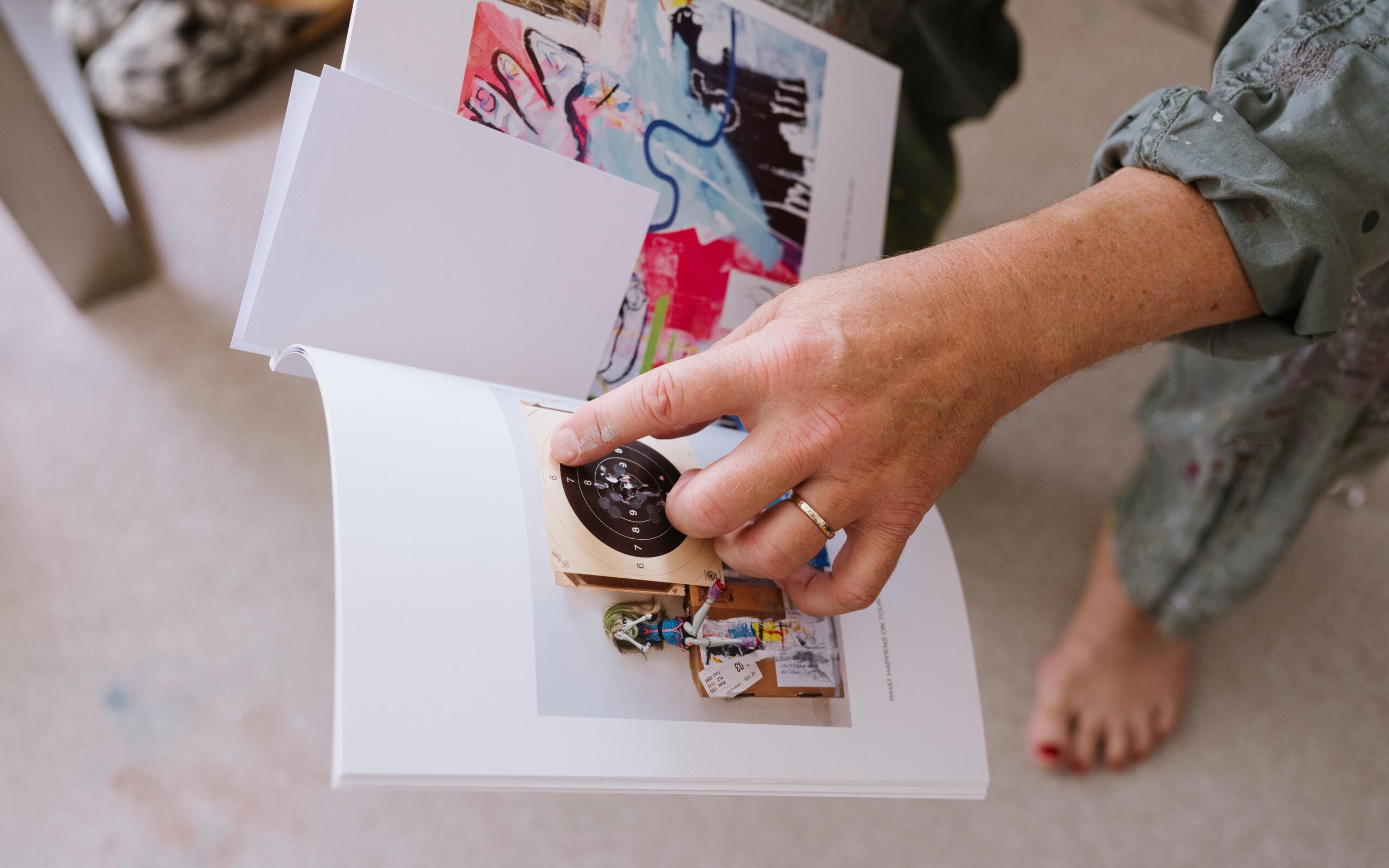
Even though you predominantly work more abstractly, figurative elements can still be found in your painting. What is your artistic concern, what themes preoccupy you?
For me, human issues and the emotional are in the foreground. What occupies people, what can open people’s perspectives? That is my artistic approach, that is to say, how can I make art accessible to people and also make them understand what I do. When I look at my work now, I see the abstract, but many people are mainly looking for something figurative, because it is more immediately meaningful to them. But if I notice that someone is having a hard time, then I just try to talk about it. And after the conversation, many people say: Now I understand, now I know now what it is about, and what you mean. And that opens up perspectives, and I find that very special and important to me in art, this opening up.
So, exchange is important to you?
To me, conversation is very important. 90 percent of the people who buy my art know me personally. Two years ago, someone bought paintings from me but first he also wanted to meet me personally, he would not buy anything if he did not know the artist. In the art market you find both, there are also those buyers who buy the art, but don’t have a need to get to know the artist. However, it is important to me to make a connection, that is, I want to know who the interested parties and buyers are, and also where the pictures will hang.
So you always know where your works are?
(laughs) Yes, it is all documented.
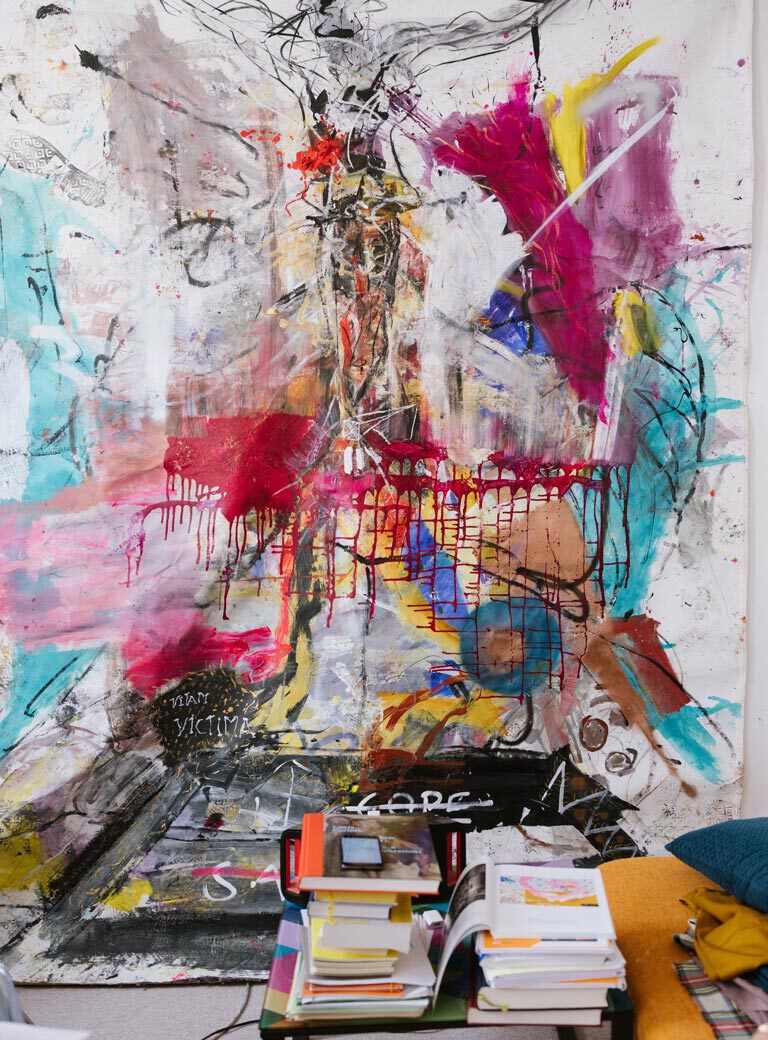
Would you say you find the subjects or do they find you?
The topics find me. I begin 90 percent without a specific idea. Initially, I follow my emotions, and in the process an idea usually emerges. In 10 percent of my work, I have a concrete idea and try to realize it. Both are difficult, the latter process is already extremely complicated, because at times you only have one chance in painting, and if it doesn’t work, you can only paint over it. Both composition and creating spaces in a painting are equally important to me when painting.
Are there any topics you’d like to work on?
The subject of faith captures me again and again. This question of what is between heaven and earth, occupies me. What is going on here? Why is one person appealing to me and another not? Why do I paint such pictures? I’m not religious, but maybe that’s why this struggle fascinates me as well as the question: what does one believe in? In fact, I am currently working on the exhibition trilogy Cross Over – Word Games – Point of View (to be held in Vienna, October to January 2022/23), which will explore this very topic. However, so to speak, I consider this artistic process regarding what can be discovered and what can I do new in art as superficial. Just painting the same pictures or using the same stroke repeatedly does not interest me.
What is the source of your inspiration?
Books and conversations are sources for my artistic work as are philosophy and jurisprudence…plus language, also, storytelling. I give storytelling workshops in schools and also paint with the children at the end of the workshop. And I’m also involved in theater projects with young people. This contact with people is important to me, because I see them grow and their voices develop. But inspiration also comes from certain places, like the Pavarotti Museum in Italy, which I visited recently. Often it is very touching, I try to take a little everywhere, try to find something new. And here we go back again to the earlier topic: the connection of art and being human, art and being touched or opening perspectives, then the circle of inspiration completes itself.
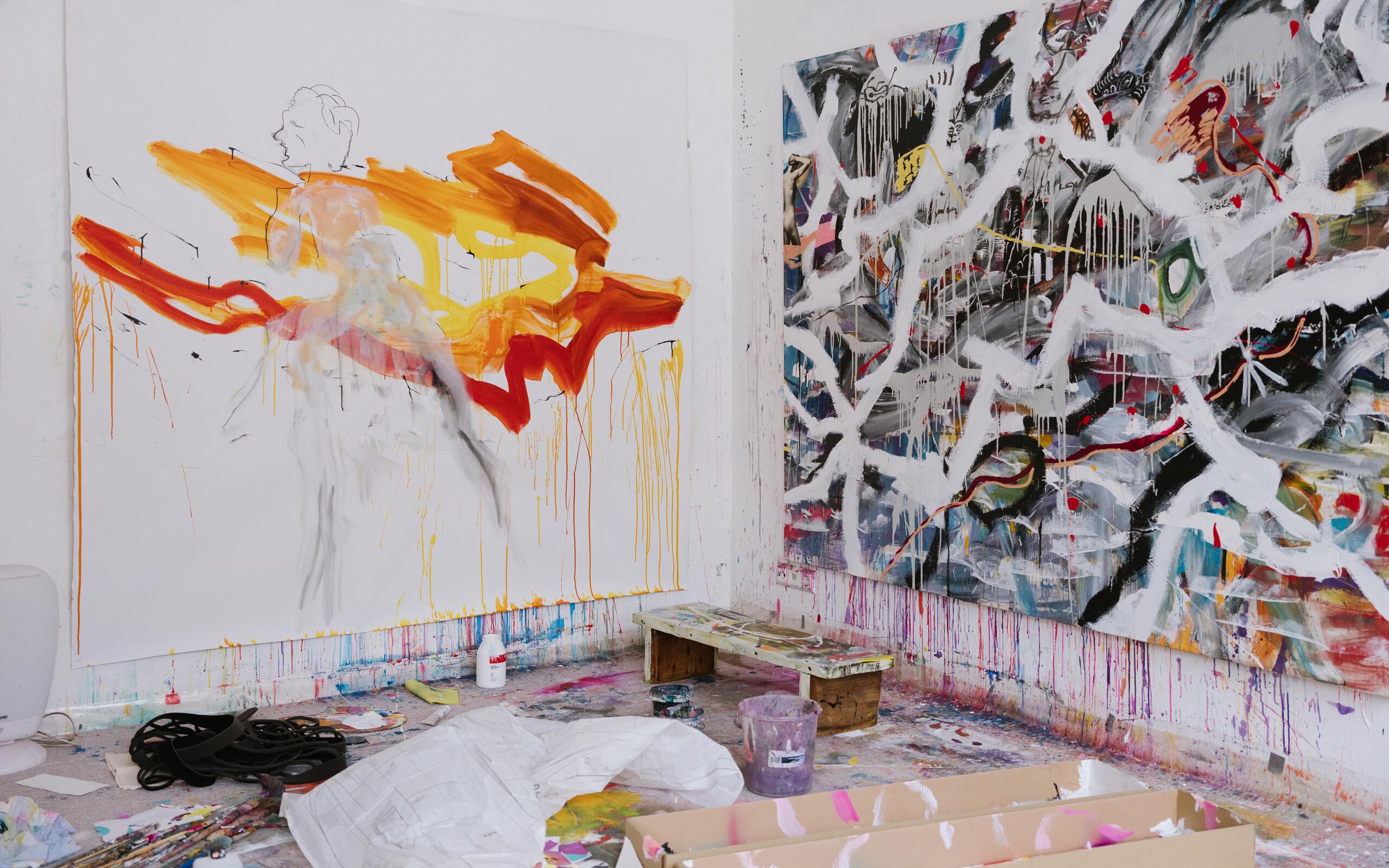
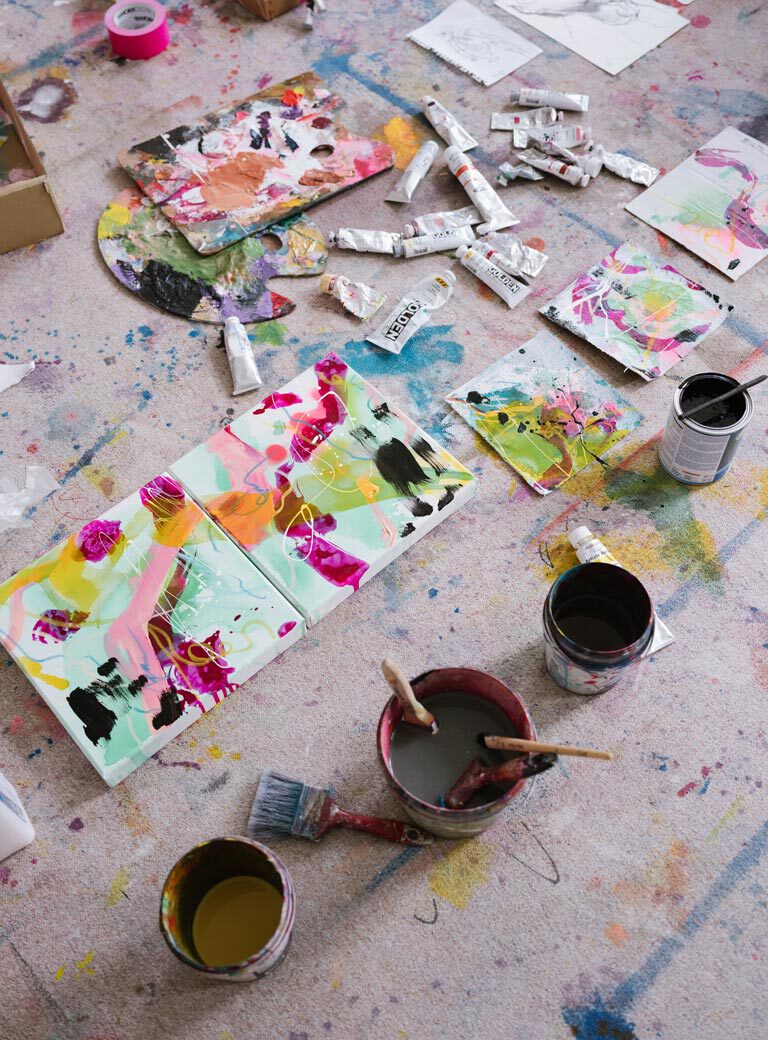
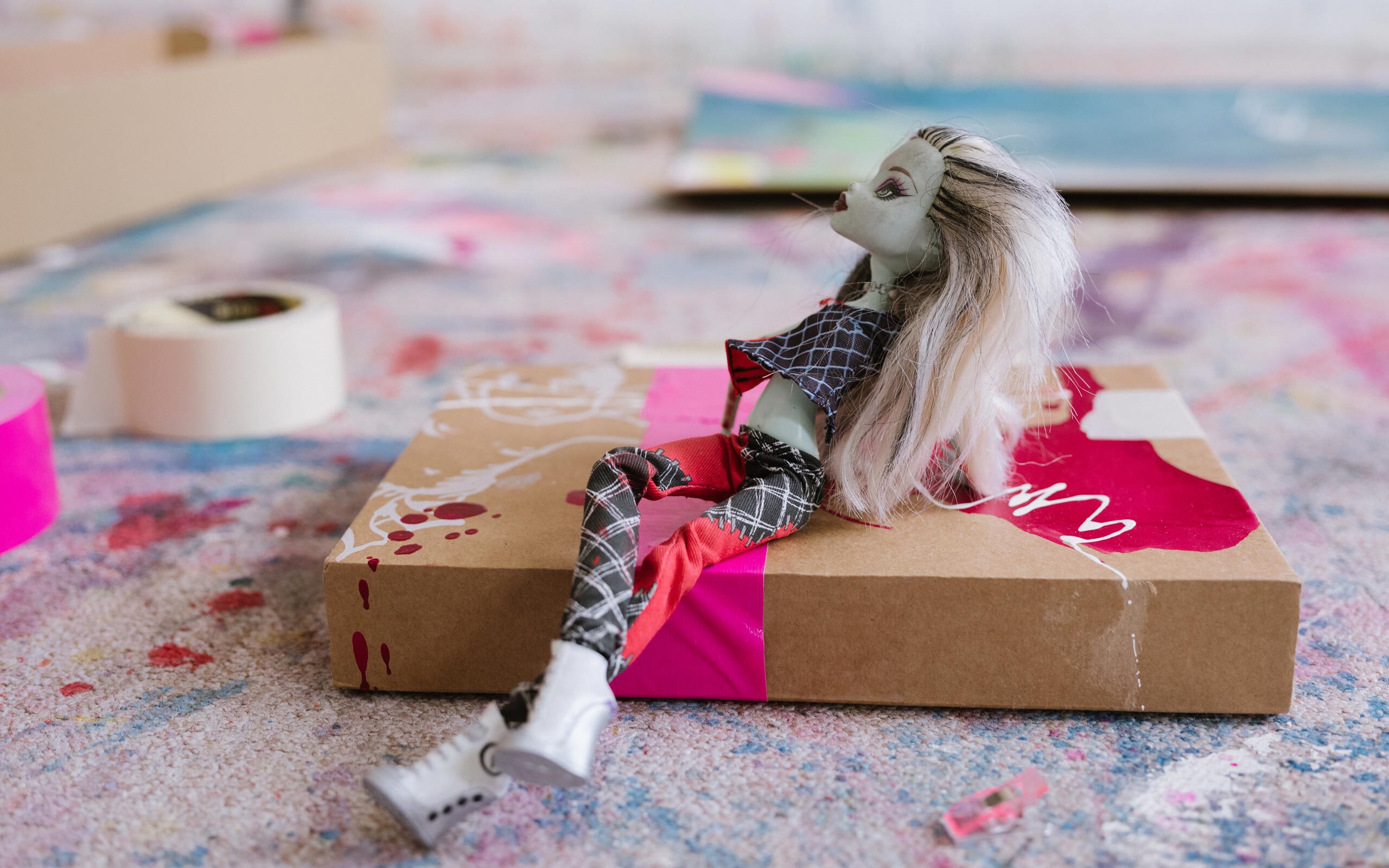
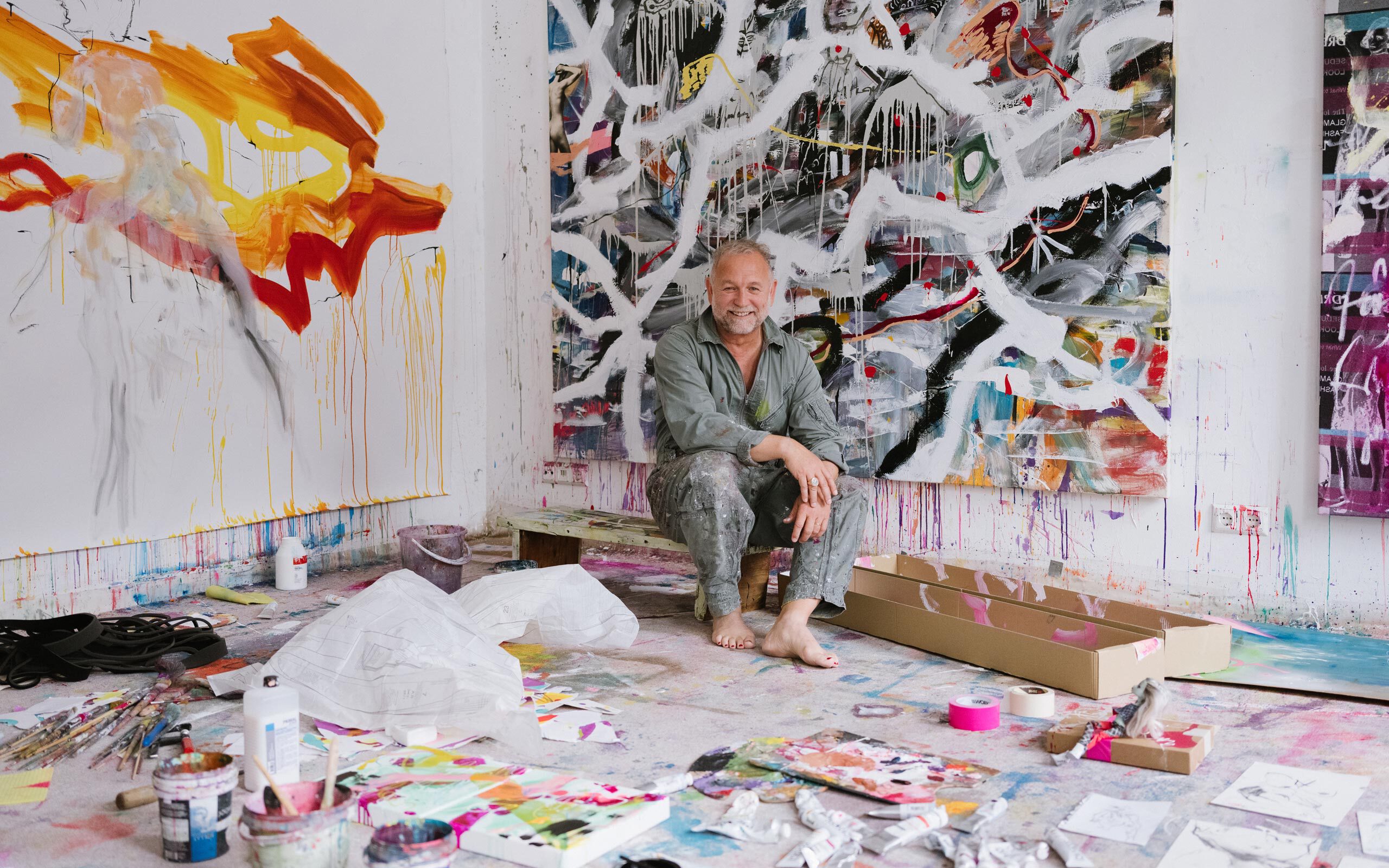
In addition to the title, you also indicate the place of origin. What role do title and place play for you?
The title is important for me because it gives my work a certain completion. When I title the painting, it is 99 percent finished for me. In fact, the title is part of the identity of the artwork for me. There is not a single piece of art in my work that doesn’t have a title. And in my experience, people identify with the titles of my works. For me, the location is tied into the locality, where I definitely work differently. I paint differently in New York than I do in Ardagger or London, because the creation of the work is different and there is reference to the local environment. If I didn’t give a title or the location and left everything open, the work wouldn’t be complete to me.
What reactions do you like to see?
I have no expectations at all and try to be completely impartial. At the very beginning of my career, there was this moment at an exhibition where the mixture of colors – an orange and a magenta – in one of my paintings irritated someone so much that he exclaimed: Who painted this picture? This is impossible! How can one use those these two colors? And I thought to myself: what do I do now? It was an experience where I said to myself: okay, I have to figure out how I want to deal with this. There are always people who just walk by a painting, and there are those who stand in front of a painting and don’t leave. I try to be unbiased, for me it’s okay if someone walks by, because I don’t like everything either. That is actually beautiful, and it is very important to respect that in art.
Are there any misconceptions about your artistic work that you would like to address?
I move between the informal and the figurative in such a way that each viewer can see something completely different in the forms, and that is the most exciting thing for me. As soon as it moves too much towards the realistic, it becomes too much for me, because then the viewer immediately recognizes what it could be. I try to dissolve the content completely, so that only parts and fragments are recognizable and everyone will see something different. Sometimes people come to me and say: Hey, that’s such and such. And I respond: Okay, interesting. And they say: But you should know, you painted it! I think that’s the most beautiful thing in abstraction, when people come and say, I see this or that, because it’s exactly in this spectrum that I want to move.
And how would you describe the art you make in a few simple words?
Dynamically expressive painting, with the characteristic feature as this movement between the abstract and the figurative, where everyone can see what they want. And with me you can see colors. And my art should also be something beautiful and it’s nice to know when people live with my paintings for years, when they hang them in their living rooms, for example, and just enjoy them.
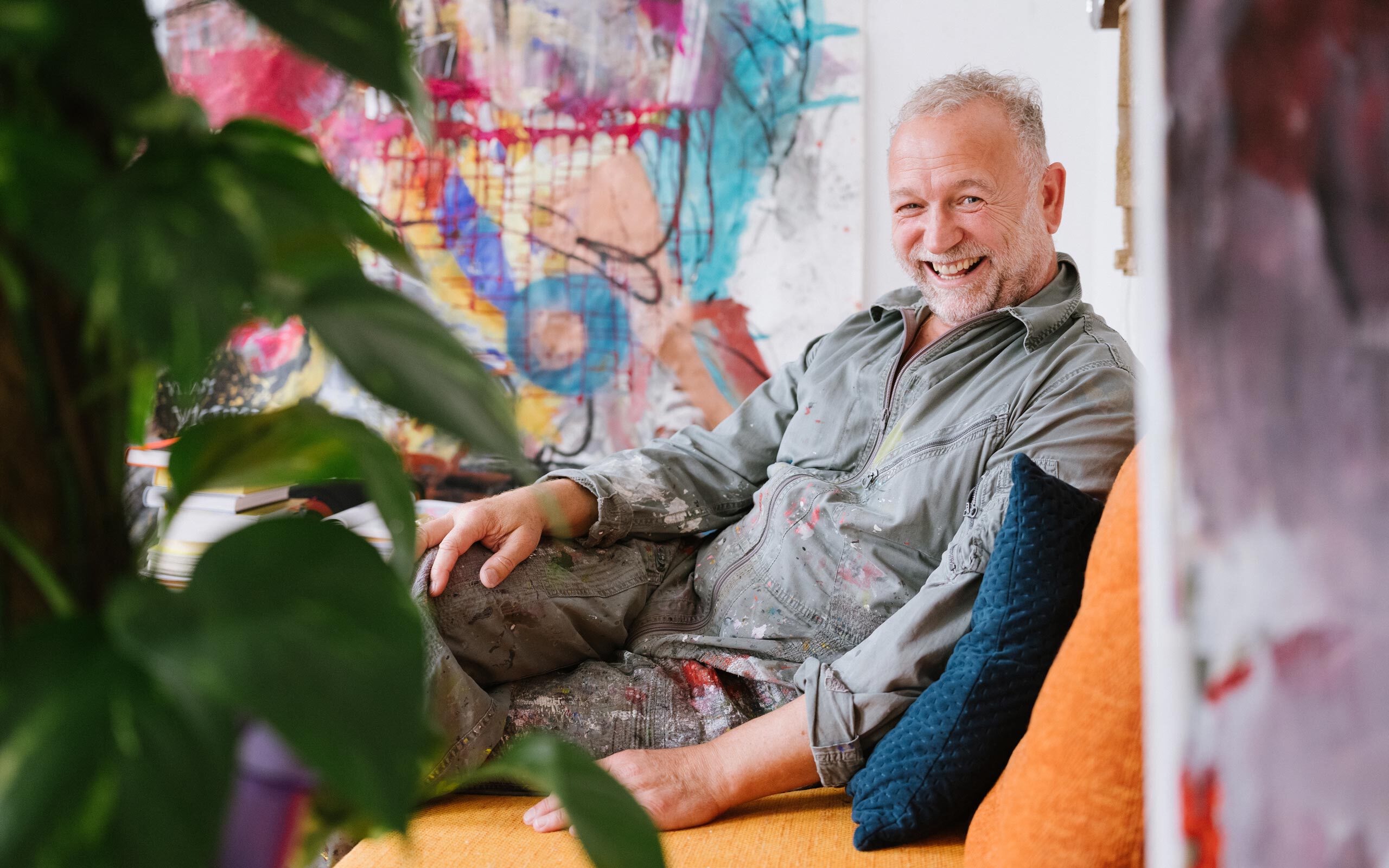
This Viennese studio is indeed only one possible source of your artistic production. How should we imagine your typical working process here?
I begin working at about 9 a.m. on what’s ongoing, including at present, commissioned works like this print you see here, this Jesus on the Mount of Olives. Or the other picture, which is just in the making, and now I have reached the point of asking myself the question: do I want this at all, or am I just destroying the picture with the next step. Sometimes, because I document everything photographically, I go back and think to myself: I went too far, because what was before would have actually been quite cool. But in the process, you often don’t know that, that’s the difficult thing, to recognize when is the right moment to stop, when the painting is done. In general, one can say: paths are created by walking them; that helps me in my work. And of course, there is a lot of office work that I do here in the studio or together with my wife Nicole in our apartment, which is located in the same house. But the mix is important to me, so I make sure that I’m at least half a day in the studio working and the other half of the day organizing office work, social media, and other projects.
You didn’t come to art in a classically institutionalized way. Do you think this way has more advantages or rather hurdles?
Actually both. Because my path is self-taught, I definitely think I’m freer in what I do in art. I think when you’re in the academy, for example, you’re often pushed into a scheme, or judged, which can partially block you, and then when you go out and you’re on the free market, you have to try to get your freedom back again. What’s not so pleasant when you think about the art market is often the first question you are asked is: With whom did you study? And it is then certainly more difficult to find an established gallery that wants to work with you. However, I see only advantages for me and my artistic work.
Interview: Marieluise Röttger
Photos: Christoph Liebentritt


